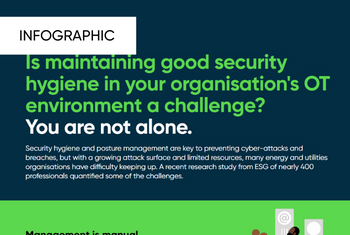Governance in cyberspace is challenging due to its borderless nature and rapid technological advancements. Diverse legal systems and cultural norms further complicate international regulatory efforts.
Cyberspace governance faces unique hurdles. The realm is inherently global and interconnected, defying traditional physical and jurisdictional boundaries. This digital world evolves at a dizzying pace, outstripping conventional regulatory measures and processes. National laws struggle to keep up, resulting in a patchwork of regulations that may conflict or leave gaps in oversight.
Various stakeholders, including governments, corporations, civil society, and individuals, have differing objectives and influence, leading to complex dynamics in policy-making and enforcement. These factors, combined with the fluidity of digital information and varying levels of technical understanding among policymakers, make crafting effective governance strategies for cyberspace a formidable task. As we navigate this digital frontier, the call for coherent, inclusive, and adaptable governance frameworks becomes increasingly urgent.
The Uncharted Territory Of Cyberspace Governance
Understanding cyberspace governance is like navigating an enigmatic digital ocean. Traditional rules don’t always apply here. This new world poses unique challenges.
Navigating Diverse Legal Frameworks
Legal frameworks vary across the globe. Each country has its own rules for the internet. This makes creating a standard governance structure tricky. We must consider:
- Data privacy laws
- Content regulation
- Electronic transactions
- Intellectual property rights
All these elements interact complexly. Aligning them requires effort and diplomacy.
The Blurred Lines Of Jurisdiction
In cyberspace, jurisdictional boundaries are unclear. A user in one country can easily affect another’s digital space. Conflict arises:
| Issue | Impact |
|---|---|
| Data breaches | Global consequences |
| Cyber attacks | Cross-border complications |
| Regulatory compliance | International disputes |
Identifying responsible parties can be difficult. Enforcing penalties across borders is even harder.
Pace Of Technological Advancement
The digital world races ahead with leaps and bounds, presenting unique challenges for governance. New technologies emerge faster than laws can adapt. This mismatch creates a complex landscape for regulation and control in cyberspace.
Innovation Outrunning Regulation
Innovation Outrunning Regulation
Technological breakthroughs often surpass the speed of legislative processes. Innovations hit the market while regulations lag behind. This creates a gap where new technologies operate without oversight.
- Uncharted Digital Territories: New tech opens unexplored areas without rules.
- Rapid Adoption: Consumers and businesses use new tools before laws catch up.
- Global Reach: Tech crosses borders faster than international agreements can form.
Adapting Laws to Emerging Technologies
Adapting Laws To Emerging Technologies
Laws must evolve with technology to maintain relevance and control. The challenge lies in predicting tech trends and crafting flexible laws.
| Challenge | Response Needed |
|---|---|
| Dynamic Tech Landscape | Create adaptive policy frameworks. |
| Varied Tech Impacts | Assess and iterate regulatory impacts. |
| Preventive Measures | Build safeguards against misuse. |
Conflict And Cooperation Among States
Navigating the complex web of cyberspace governance is a daunting task. States come to the table with different agendas. They must balance their national interests with global cybersecurity needs. This dance between conflict and cooperation defines the effort to secure cyberspace for everyone.
National Interests Vs. Global Commons
In cyberspace, national security is a top priority for governments. Each state wants to protect its cyber boundaries. Nations often clash when their interests do not align. Yet, they rely on the same global digital networks. Till now, worldwide rules for the internet are not well established. This gap makes governing cyberspace hard.
States must work together to create harmony. The internet is a global space. It thrives on openness. A balanced approach is needed for it to stay healthy. Finding this balance is often a tug-of-war between singular goals and the wider good.
Building Consensus In International Policies
Crafting international policies is like navigating a maze. Every country has a voice. They all need to agree for policies to work. Building consensus needs time, dialogue, and trust. It’s a process that often moves slowly.
- Diplomacy is the tool used to smooth this path.
- Frequent meetings and open channels help.
- Transparency shoos away distrust.
- But the climate is often tense with digital espionage.
To move forward, states share knowledge. They form groups to push collective action. They reach across borders to build bridges. It’s like quelling fires in multiple places at once.

Credit: www.linkedin.com
The Anonymous Nature Of Cyberspace
The anonymous nature of cyberspace stands as a towering challenge for governance. This digital veil provides cover for individuals to engage in a range of activities online without easy identification. The effects of such anonymity touch every corner of the internet, leading to questions of accountability and law enforcement’s ability to protect users and uphold regulations.
Challenges In Attribution
- IP Masking: Users hide their true locations using VPNs and proxies.
- Encrypted Services: Communication via encrypted channels complicates tracking.
- Hacking Skills: Skilled hackers can impersonate others or cover their tracks.
In the realm of cyberspace, identifying the person behind an action can seem almost impossible. Without clear markers, the question ‘Who did this?’ often remains unanswered. This lack of traceability allows cybercrimes to flourish, making it difficult for authorities to take action.
Proliferation Of Online Anonymity
Anonymity reigns supreme across vast stretches of the internet. This secrecy acts as a double-edged sword. While it can protect free speech and personal privacy, it also opens doors for misuse. The chart below illustrates the spread of anonymity and its impacts:
| Aspect | Benefit | Challenge |
|---|---|---|
| Privacy | Protects user identity | Hinders accountability |
| Social Media | Encourages expression | Facilitates fake news |
| Forums | Permits open discussion | Allows harmful actions |
Online platforms offer various tools for users to remain unidentified. From disposable email addresses to anonymous browsing, such options paint a complex landscape. These features often get exploited, leading to a wild west scenario online, where rule-breakers operate with impunity.
Private Sector Influence And Responsibility
The realm of cyberspace governance presents unique challenges. Chief among these is the role of the private sector. With tech giants and corporations holding significant power over digital landscapes, understanding their influence and responsibility becomes paramount. The dynamics of corporate control and the hybrid model of governance involving both private and public entities raise crucial questions about the future of cyberspace governance.
Corporate Power In Digital Infrastructure
Corporations play a major role in shaping our digital world. They own vast swaths of internet infrastructure, impacting the way information flows. These digital gatekeepers influence what we see online. The control over data and user engagement translates into substantial leverage over societal norms and privacy standards.
- Major tech companies often dictate access and usage policies
- Digital platforms wield power over user data and privacy
- Decisions made by the private sector can have global implications
Public-private Partnerships In Governance
A collaborative approach in governance emerges with public-private partnerships (PPPs). These alliances bring together government oversight with the innovation and resources of the private sector. PPPs aim to create a more manageable and secure cyberspace while respecting user rights and promoting internet accessibility.
| Benefits of PPPs | Challenges |
|---|---|
| Expertise sharing | Interests alignment |
| Resource efficiency | Accountability measures |
| Innovation boost | Ensuring public interest |
- Coordinated efforts can tackle cyber threats more effectively
- PPPs can bridge the digital divide by providing more equal access
- They can draw upon the strengths of both sectors to enhance online services
Cybersecurity Threats And Their Management
Navigating the treacherous waters of cyberspace is no small feat.
Governance in this domain faces unique hurdles. One major challenge is how to effectively manage cybersecurity threats.
Threat actors relentlessly launch sophisticated attacks, making safeguarding digital assets fraught with dangers.
Countering Cybercrime And Cyberterrorism
Cybercrime and cyberterrorism represent two ominous frontiers in digital transgressions.
These threats exploit the interconnected nature of the internet to cause harm globally.
Strategies to counter these malicious acts include international cooperation and robust legislation.
- Improve incident reporting: Ensure timely sharing of attack patterns.
- Leverage technology: Deploy AI to detect anomalies in data flows.
- Train personnel: Invest in continuous education for cybersecurity teams.
Strengthening Cyber Defense Mechanisms
A fortified defense is key to deterring digital adversaries. A multi-layered approach secures systems from breaches and data theft.
- Deploy firewalls: Act as barriers against unauthorized access.
- Regular updates: Keep software and hardware resilient against attacks.
- Access controls: Limit system entry to verified users.
In embracing these practices, the digital realm becomes a safer space for users, governments, and businesses alike.
Information Overload And Misinformation
The digital realm is a vast expanse where information flows like water in a raging river. This abundance often leads to ‘Information Overload and Misinformation’, making governance a daunting task. Users find themselves inundated with data. Deciphering truth from fiction becomes a herculean undertaking. Misinformation can spread unchecked, complicating efforts to maintain order and protect users.
Combatting Fake News
Fake news undermines trust and spreads chaos. To tackle this, digital platforms deploy algorithms designed to detect and demote false information. Fact-checkers and educational campaigns work tirelessly to raise awareness.
- Utilize advanced AI checks for flagging suspicious content.
- Enhance user literacy through digital awareness programs.
- Encourage the community to report falsehoods.
Regulating Data And Privacy
Protecting data and privacy in cyberspace is no small feat. Laws like GDPR and CCPA provide frameworks for safeguarding personal information. Companies must adhere to these regulations to ensure user data is handled responsibly.
| Regulation | Purpose | User Benefit |
|---|---|---|
| GDPR | Protect data in Europe | Control over personal data |
| CCPA | Transparency in data usage | Right to know and delete data |
With clear rules, entities store and process information transparently. Users gain more control and security over their digital selves.
Human Rights And Access To Information
The digital world expands rights and freedoms for people everywhere. But, governance in cyberspace presents unique challenges. When discussing Human Rights and Access to Information, these become more complex.
Ensuring Freedom Of Expression
Everyone should speak freely online. Yet, governments and companies can limit this. We must ensure policies protect the right to share ideas and opinions.
- Defend online speech policies
- Challenge censorship to maintain open internet
- Support digital activists worldwide
Balancing Security And Privacy
Cyberspace security is critical. But, privacy is also a right. Finding the balance is tough.
| Security Measures | Privacy Concerns |
|---|---|
| Data Encryption | User Anonymity |
| Surveillance for Safety | Personal Data Protection |
We need laws and technology that secure data and respect privacy.
Emerging Technologies And Future Challenges
As we sail into the digital future, new technologies emerge swiftly, reshaping how we live and work. Knowing how to manage this digital landscape becomes a complex task. With each innovation, the rules of the game change. Leaders must tackle not only current tech but also prepare for what’s coming next.
Governance Of AI And IoT
Artificial Intelligence (AI) and the Internet of Things (IoT) are transforming our world. They make life easier but create new challenges in governance. Imagine millions of devices communicating, collecting data, and making decisions. It raises key questions:
- Who is responsible when AI makes a mistake?
- How do we protect privacy with devices that monitor our every move?
- What laws should apply to machines that think and act?
We need clear rules to ensure these technologies serve and protect people.
Anticipating The Next Digital Revolution
The next wave of digital change is just over the horizon. Experts predict breakthroughs that will redefine cyberspace. To stay ahead, governance must adapt quickly. We must:
- Understand new tech before it hits the mainstream.
- Build flexible policies for rapid technological shifts.
- Foster global collaboration to address cross-border challenges.
This proactive stance ensures the digital world remains a safe, fair, and innovative space for all.

Credit: your.servicenow.com
Toward A Collaborative Governance Framework
Understanding that a shift is needed toward collaborative governance in cyberspace sets the stage for progress. The digital world breaks physical boundaries, making traditional rules hard to apply. The solution lies in crafting a framework where different voices contribute to a stable and secure online environment. Let’s deep dive into how to make this collaborative approach effective.
Multistakeholder Engagement
Bringing diverse groups together is key in cyber governance. These include governments, businesses, tech experts, and civil societies. Each has unique insights and a stake in the cyber world.
- Open dialogue fosters understanding among these groups.
- Shared responsibilities ensure everyone contributes.
- Empowerment of stakeholders leads to proactive participation.
Crafting Forward-thinking Policies
Creating policies that keep pace with technology is challenging. The goal is to protect users and ensure an open internet.
- Anticipate future trends to stay ahead in policy-making.
- Embrace adaptability for policies to remain relevant.
- Encourage innovation while setting safety standards.
Policies must evolve with technological advances to maintain cyber resilience.
Frequently Asked Questions Of Why Is Governance Difficult In Cyberspace
What Makes Cyberspace Governance Challenging?
Cyberspace governance faces complexities due to its borderless nature, rapid technological advancements, and jurisdictional discrepancies. Varied legislative frameworks and the diverse interests of stakeholders further complicate effective governance.
Who Are The Key Players In Cyberspace Governance?
Key players in cyberspace governance include governments, international organizations, tech companies, civil society groups, and individual users. Their collaboration and conflict shape cyberspace policies and practices.
How Do National Laws Affect Cyberspace Governance?
National laws significantly influence cyberspace governance, introducing varying rules across borders. These disparities challenge enforcement and cooperation in global cyber policy, leading to areas of tension and the need for international agreements.
Why Is There A Need For Global Internet Regulations?
Global internet regulations are needed to ensure consistent standards for cybersecurity, data privacy, and content management. Such regulations aim to protect users worldwide and maintain fairness in the digital space.
Conclusion
Navigating the complex web of cyberspace governance is no small feat. It requires a delicate balance between multiple stakeholders, each with diverse interests and objectives. The challenges of jurisdiction, privacy, security, and freedom underscore the intricacies involved. As the digital landscape evolves, so must our approaches to effective governance, ensuring a safer and more equitable online community for all.












































Leave a Reply